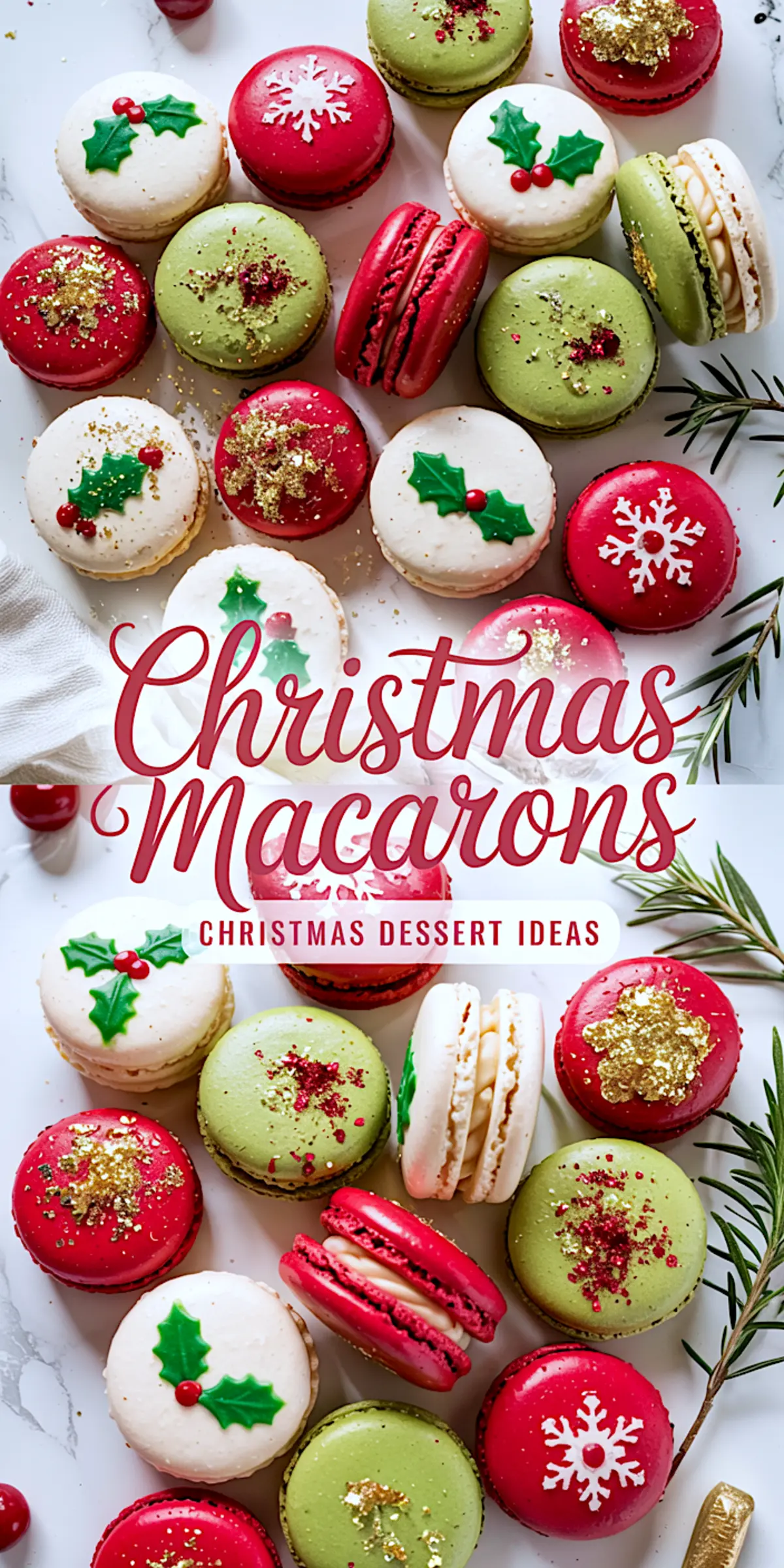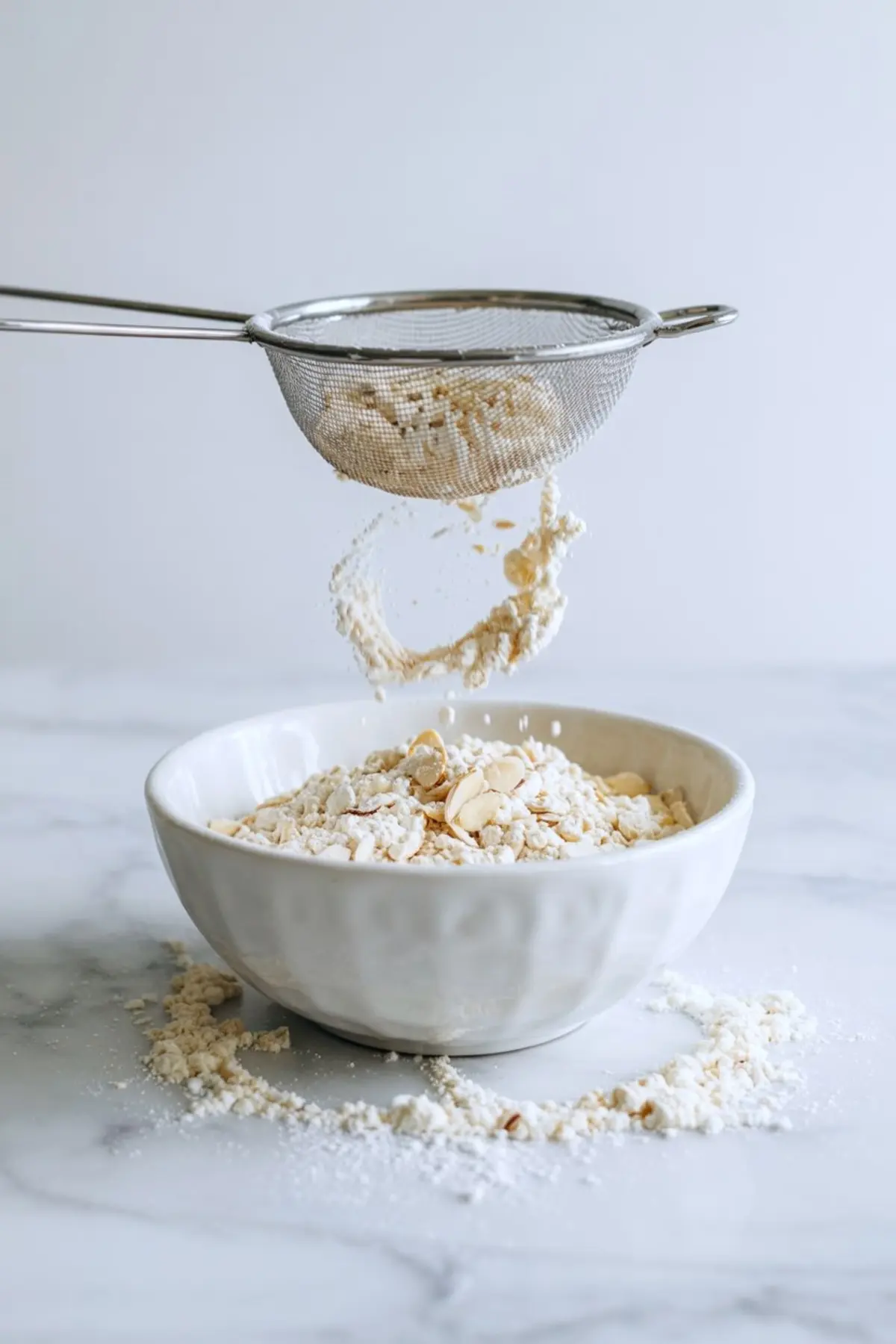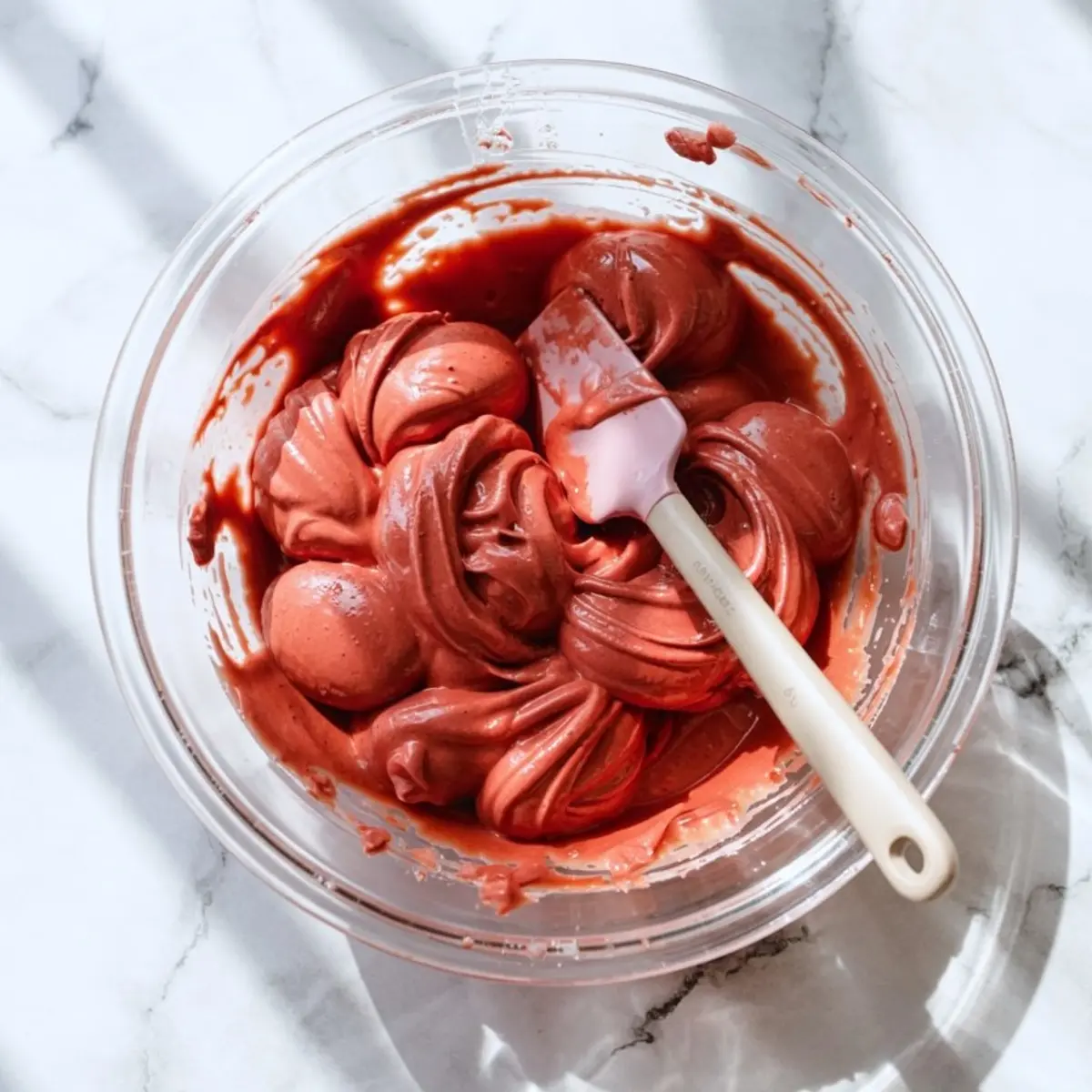Christmas macarons bring elegance to any holiday baking table. These macaron cookies have crisp shells, soft chewy centers, and fillings that can shift from classic vanilla to bright peppermint or rich chocolate. You will learn how to make them step by step, but more importantly, you will understand why each ingredient plays a role in giving these cookies their structure and festive character.
This recipe works for a Christmas cookie exchange, a holiday party spread, or even as gifts tucked into a pretty box. Macaroon recipes often intimidate new bakers, yet with the right guidance you can achieve bakery-quality results in your own kitchen. Think of these as French macarons dressed in Christmas colors and decorations. They become as joyful to look at as they are to eat.
I’ve baked countless trays of macarons over the years, and Christmas flavors bring out the most delight. Painted details, sprinkles, or edible glitter turn them into Christmas cookies decorated with personality. I want you to have confidence here. Once you understand the rhythm of macaron batter and the timing of the bake, you will feel ready for any holiday baking project.

Almond Flour and Powdered Sugar: The Foundation of Smooth Shells

Almond flour is the backbone of a proper macaron recipe. Its fine texture gives the shells that tender chew without heaviness. I always sift the flour with powdered sugar because even the smallest lump can break the glossy surface of the baked cookie.

Powdered sugar does more than sweeten. It blends with the almond flour to create a uniform, light mixture that folds smoothly into the meringue. If you ever wondered why some macaroon cookies look rough or cracked, it usually comes down to skipping the double sift. I never skip this step.
If you are curious about holiday cookie swaps, I often pair these with Christmas Cracker Toffee. The contrast of crunchy toffee and delicate macarons makes a memorable cookie box.
Egg Whites and Sugar: Building a Strong Meringue

Aged egg whites whip into a stable foam faster than freshly cracked ones. I keep mine uncovered in the fridge for a day or two before baking. This small habit pays off in structure. Granulated sugar then tightens the meringue, giving it that glossy peak we rely on for macaronage.

The moment of adding color always makes me pause. Gel food coloring works best because it holds vibrancy without watering down the batter. I’ve tried liquid colorings, but they often thin the meringue too much. Gel keeps the shells bold enough for holiday baking in shades of red, green, or snowy white.
For other festive bakes, I like to highlight Christmas Cake Idea alongside these cookies. Both carry the same sense of tradition with different textures.
Folding the Batter with Patience
The folding stage, called macaronage, separates light, airy cookies from flat, collapsed ones. I fold in circles, pressing gently against the bowl. You want the batter to flow like a ribbon, smoothing out after a few seconds. If it spreads too quickly, you have gone too far.
I remind myself often that less is safer here. It is easier to give one or two extra folds than to rescue an over-mixed batter. I learned this the hard way when an early batch spread like pancakes across the tray.
If you enjoy the creativity of decorating, try experimenting with patterns the way I do with Heart-Shaped Macarons. The same technique applies, but the holiday theme allows snowflakes, holly, or even candy cane stripes.
Resting and Baking the Shells
Piped shells need a rest to form that signature skin. This step feels slow, yet it matters most. A dry surface gives macarons their neat feet once baked. I always test by lightly touching the shell. If my finger leaves no mark, the tray is ready.
Baking at a steady 300°F keeps the shells crisp on the outside while preserving that chewy bite inside. I rotate the tray halfway through if I notice uneven coloring. Each oven behaves differently, so watching closely helps more than following time alone.
During one holiday season, I lined up trays next to a batch of Santa Belt Christmas Macarons. The decorations varied, but the baking method remained consistent. That taught me consistency comes from rhythm, not guesswork.
Filling with Buttercream and Flavor
Softened butter whipped with powdered sugar makes a simple buttercream that pairs beautifully with macaron shells. For Christmas macarons, peppermint extract gives a bright touch, while vanilla feels classic. A spoonful of heavy cream loosens the mixture to a silky pipeable texture.
I sometimes sandwich the shells with ganache instead. Ganache sets firmer and travels well in gift boxes. Buttercream, however, allows more flexibility with colors and flavors. I’ve tested both, and my notes show buttercream works best for beginners, while ganache gives a more sophisticated finish.
In a cookie exchange box, I balance both fillings so the variety feels special. It reminds me of mixing candies in a tin.
Serving and Storing with Care
Christmas macarons taste even better the next day. I always refrigerate filled cookies for 24 hours before serving because the flavors blend into the shells. This short wait brings that bakery-style texture you expect.
For storing, an airtight container in the fridge keeps them fresh for five days. They also freeze well for up to a month if layered between parchment. I wrap mine in small portions so I can thaw only what I need.
Placed alongside holiday treats like Christmas Cake Idea or candy, they make a centerpiece dessert tray. Presentation matters as much as taste.
Why Christmas Macarons Deserve a Place in Your Holiday Baking

Christmas macarons carry elegance and playfulness in one bite. You learn precision with the batter, patience with the resting time, and creativity in the decoration. Each batch teaches something, and each tray feels worth the effort.
Takeaway: Macaron cookies bring French technique into your holiday kitchen, but with almond flour, sugar, and egg whites you already know. Add festive colors, thoughtful decoration, and a buttercream filling, and you have cookies that shine in any Christmas cooking spread.
Save this recipe to your Christmas board for later. Share your results or questions in the comments, because I’d love to know how your holiday baking turns out.
Christmas Macarons Recipe
Christmas macarons are light, crisp cookies with a chewy center, filled with festive buttercream or ganache. I use a classic macaron recipe and tint the shells with soft red or green before decorating with sprinkles or painted details. These macaron cookies are perfect for holiday baking when you want something elegant on the tray. You can try different macaron flavors like peppermint, vanilla bean, or spiced chocolate. I include them in Christmas cookie exchange boxes or serve them as part of my Christmas cooking spread. If you’re looking for Christmas cookies decorated with a little extra care, save this one. It’s a reliable choice for macaroon recipes that actually hold their shape and flavor.
Ingredients
- FOR THE MACARON SHELLS
- 120g almond flour (finely ground)
- 120g powdered sugar
- 90g egg whites (about 3 large eggs, aged at room temperature)
- 100g granulated sugar
- Gel food coloring: red, green, white
- Optional: edible glitter, snowflake stencils, royal icing for decorating
- FOR THE BUTTERCREAM FILLING
- 150g unsalted butter, softened
- 250g powdered sugar
- 2–3 tbsp heavy cream or milk
- 1 tsp vanilla extract or peppermint extract (optional for holiday flavor)
Instructions
- PREP THE DRY INGREDIENTS: Sift almond flour and powdered sugar into a medium bowl, discarding any coarse bits that remain. This ensures smooth, lump-free macaron shells. Separate egg whites in advance and age them uncovered in the refrigerator for 24–48 hours, then bring to room temperature before using.
- MAKE THE MERINGUE: In a clean, grease-free mixing bowl, beat the egg whites on medium speed until foamy. Slowly add granulated sugar one spoonful at a time while mixing. Once all the sugar is added, increase speed to high and beat until stiff, glossy peaks form. Add a few drops of gel food coloring and mix gently until fully combined.
- MACARONAGE (FOLD THE BATTER): Using a silicone spatula, gently fold the sifted almond flour mixture into the meringue. Continue folding in a circular motion, deflating some of the air, until the batter flows off the spatula in a thick ribbon and smooths out within 10–15 seconds. Avoid overmixing or the batter will become runny.
- PIPE AND REST: Transfer the batter to a piping bag fitted with a round tip. Pipe 1.5-inch rounds onto a parchment-lined baking sheet, spacing them evenly. Firmly tap the tray against the counter 4–5 times to release air bubbles. Allow the piped shells to rest at room temperature for 30–60 minutes until they form a dry skin. They should not stick when lightly touched with a finger.
- BAKE: Preheat oven to 300°F (150°C). Bake macarons one tray at a time for 12–15 minutes, turning the tray halfway through if needed. The shells are ready when they no longer wiggle and can be lifted cleanly from the parchment paper. Allow to cool completely on the tray before removing.
- MAKE THE BUTTERCREAM: In a mixing bowl, beat the softened butter until smooth and creamy. Gradually add powdered sugar, beating well after each addition. Add cream or milk one tablespoon at a time until desired consistency is reached. Mix in vanilla or peppermint extract if using.
- ASSEMBLE AND DECORATE: Match macaron shells in pairs by size. Pipe a small amount of buttercream onto the flat side of one shell, then gently sandwich with the second. Decorate assembled macarons using royal icing, edible glitter, snowflake stencils, or fondant holly as desired. Store in an airtight container in the fridge for 24 hours to allow flavors to mature before serving.
Notes
Macarons are sensitive to humidity, so choose a dry day for baking if possible. Aging egg whites helps create a more stable meringue, but this step can be skipped in a pinch. For best results, use a kitchen scale to measure all ingredients precisely. Decorated macarons can be stored refrigerated for up to 5 days or frozen for longer storage.
Nutrition Information
Yield
30Serving Size
1Amount Per Serving Calories 183Total Fat 11gSaturated Fat 6gTrans Fat 0gUnsaturated Fat 5gCholesterol 25mgSodium 16mgCarbohydrates 20gFiber 1gSugar 18gProtein 2g

